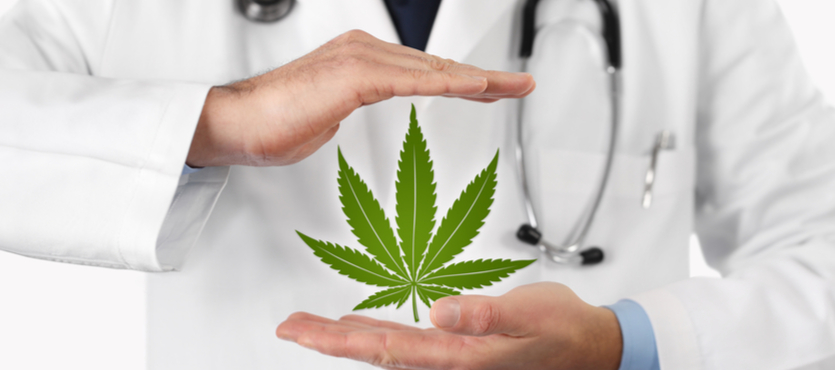There is ample anecdotal evidence about the ability of marijuana to alleviate anxiety and other Post Traumatic Stress Disorder symptoms. Now, a team of researchers wants to find scientific proof.
Under the auspices of the International Review Board, the nonprofit Battle Brothers Foundation, in cooperation with NiaMedic, will follow PTSD veterans in California who use cannabis for three months. Researchers hope to learn more about the efficiency and safety of medical marijuana. According to some studies, as many as 30% of Iraq and Afghanistan veterans struggle with PTSD.
In a statement, BBF president and founder Bryan Buckley said “This news could not come at a better time. Every day, 22 veterans are dying due to effects of post-traumatic stress from opioid addiction to depression. Through anecdotal experiences, we know that cannabis can alleviate symptoms and provide relief. We appreciate that the IRB recognizes the validity of and the need for this study.”
PTSD Symptoms
Combat-related PTSD is by no means a product of the War on Terror. In fact, contrary to popular myth, it is not even a product of the modern, mechanized weapons which first came into use in World War I. Yes, weapons like machine guns and ordnance loaded with TNT accelerated the incidents of PTSD. But the condition itself has a much longer history.
For example, in the American Civil War, doctors on both sides spent considerable time dealing with a condition they called “nostalgia.” Symptoms included depression, isolation, and loss of interest.
At the time, doctors believed that a vigorous offensive campaign was the best treatment for what they believed was advanced homesickness. Ironically, of course, offensive campaigns are probably what caused these symptoms to begin with.
The Civil War is not the first conflict which induced PTSD. IN fact, it’s not even close. William Shakespeare accurately described many of the symptoms in his 1597 play Henry IV, Part 1. At one point, Lady Percy addresses her husband Hotspur, who has just returned from an overseas conflict.
“O my good lord, why are you thus alone?
For what offense have I this fortnight been
A banished woman from my Harry’s bed?
Tell me, sweet lord, what is ‘t that takes from thee
Thy stomach, pleasure, and thy golden sleep?
Why dost thou bend thine eyes upon the earth,
And start so often when thou sit’st alone?
Why hast thou lost the fresh blood in thy cheeks
And given my treasures and my rights of thee
To thick-eyed musing and curst melancholy?
In thy faint slumbers I by thee have watched,
And heard thee murmur tales of iron wars.
The symptoms she describes, such as isolation, sudden outbursts of anger against family members, loss of appetite, sleeplessness, heightened awareness, and flashbacks, are all classic PTSD symptoms that today’s veterans, and their families, deal with every day.
The key word here is “symptoms.” These things do not just happen randomly. Instead, they are concrete signs of a serious brain injury.
PTSD: Physical Injury or Processing Disorder?
Exposure to extreme stress, which is basically any event which triggers the fight-or-flight instinct, triggers chemical changes in the brain. The amygdala, which controls emotional responses, enlarges. The cerebral cortex, which controls logical responses, shrinks.
Think about a horse and rider. The horse is the amygdala and the rider is the cerebral cortex. If the rider does not guide the horse, the horse often runs wild. This imbalance explains the aforementioned symptoms.
It is not logical to lash out at family members for no reason or to mistake a lawn sprinkler’s noise for a machine gun’s noise. But that is how PTSD victims behave. Their cerebral cortexes are so compromised that they cannot just “get over it.” They need medical help for this medical condition.
For this reason, Canada’s armed forces recently dropped the PTSD name and replaced it with OSI, or Operational Stress Injury. OSI victims are eligible for the Sacrifice Medal, which is the Canadian equivalent of a Purple Heart.
Despite all this, the old perceptions about PTSD persist, even among doctors. At best, many doctors only treat the symptoms. They do not recognize the underlying cause. As a result, these victims’ injuries often get worse. The medicine doctors give them often simply mask their deteriorating conditions.
Injury Compensation Available
A combination of surgery and therapy often effectively treats brain injuries. In the case of PTSD, the emphasis is on therapy.
Brain injury physical therapy is completely different from other forms of therapy. Frequently, therapists help patients do things like strengthen muscles and restore range of motion. But a brain injury physical therapist must teach patients new ways of dealing with stressful situations. These victims cannot count on the cerebral cortex to control the amygdala. Therefore, they must use alternative coping mechanisms.
This process is long and progress is usually uneven. Fortunately, the DBA pays for up to 10 years of physical therapy. So, patients have plenty of time to get better. However, that is assuming the insurance company does not stop the funding. So, an attorney must advocate for victims in these situations. Otherwise, their recovery is incomplete.
The DBA does not just pay for physical therapy. It pays for all reasonably necessary medical expenses, such as transportation/medevac costs, emergency care, follow-up care, medical devices, and prescription drugs. Typically, the insurance company pays these expenses directly. ANd, victims are not financially responsible for any unpaid charges.
If the insurance company drags its feet, as is often the case, an attorney usually sends a letter of protection to medical providers. This letter guarantees payment when the case is resolved. So, most providers charge nothing upfront for their services.
For more information about DBA wage replacement and other benefits, contact Barnett, Lerner, Karsen, Frankel & Castro, P.A.

